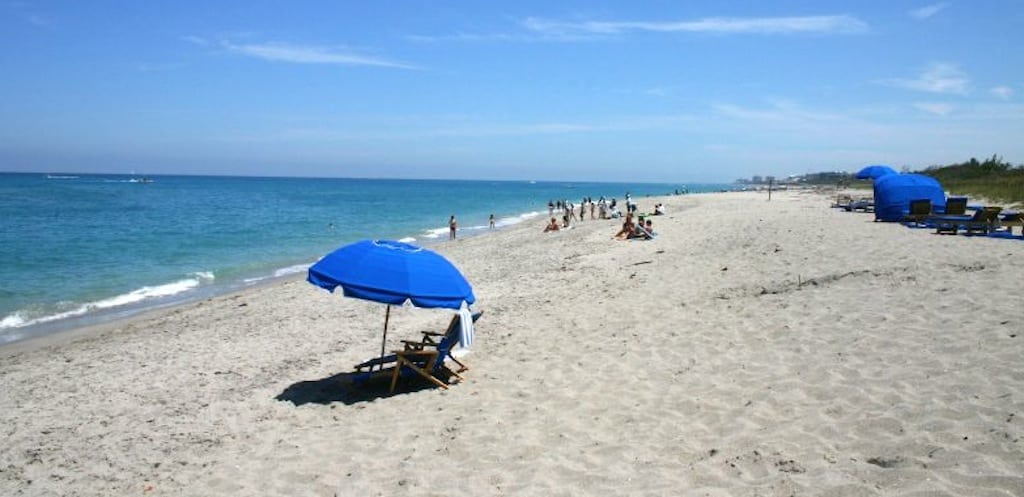Skift Take
Smart tourism boards are getting a digital edge in their marketing efforts by analyzing visitor data.
Palm Beach County, Florida, loses 8,000 jobs every year between March and August.
That’s 12 percent of the leisure and hospitality jobs, one of the county and state’s most important industries, and it’s 1.6 percent of the county’s total nonfarm jobs.
Imagine if that didn’t happen.
“Our role should be to alleviate that as much as possible,” Jorge Pesquera, CEO and president of the county’s Convention and Visitors Bureau, told tourism leaders earlier this year.
Raising visitor numbers during the ebbs and valleys is a big goal, and the county’s tourism marketing agency is using new tools — the business intelligence that comes from mining extensive data sources.
“There’s an art and science of marketing and by combining it you can show real powerful results,” said Will Seccombe, president and CEO of Visit Florida, the state’s tourism marketing agency.
The CVB gets daily information on who is visiting the county and staying in hotels. They track where they are and much of what they do — eat out, go to museums and parks, shop.
Thus the county’s tourism marketers strategize on how to get people here during “need periods” by focusing their resources and dollars.
“They’ll be smoothing out their seasonality trends, instead of just having spikes and plummets of people coming into the area,” said Kelly Semrad, associate director at University of Florida’s Eric Friedheim Tourism Institute.
Businesses can keep employees year-round, and steady employment means better trained staff and higher quality, she said. And that makes a destination more competitive.
The tourism season peaks in the first months of the year and slumps in the heat of summer. But the county’s tourism marketing agencies spend a lot of money — about $11 million from taxes on visitors, $9 million to the CVB — to pull in more travelers, business people and snowbirds.
The target of the county Convention and Visitors Bureau is to get more people here — especially in the shoulder and off-seasons — and have them stay longer. “That’s the mission,” said Glenn Jergensen.
In fact, Pesquera’s goal post is a 10 percent increase in visitors.
What could that 10 percent bring, according to Convention and Visitors Bureau calculations? More hotel room rentals for $42 million more in hotel revenue and $2.1 million more in tourist taxes. An estimated $550 million more in visitor spending resulting in $82 million in state and local taxes.
And the bottom line is jobs: 5,000 more paychecks for Palm Beach County workers.
The agency’s expanded data use gives it a leg up, Semrad said.
“Every tourist that comes into the area, it’s important to maximize that dollar that they bring,” she said. “If they’re not understanding who is coming in, where they came from, why they’re coming into area, they don’t know where to send those marketing dollars.”
Visit Florida increased its return on investment for advertising 400 percent in the past five years, and that’s largely due to more sophisticated use of data, Seccombe said. “You’ve always known the old mantra of target the right people at the right time,” he said. “Now there are much more sophisticated analytics.”
The CVBwants that precision.
“The purpose of our intelligence is to be able to target not only the hotel occupancy, but the time of year,” said Glenn Jergensen, who joined the agency last year as senior vice president of operations.
“We’re putting our money where it needs to be in the time it needs to be,” said Gustav Weibull, the CVB’s research and data manager.
What can targeted marketing do?
For local hotels it raised occupancy levels in July from 60 percent to 62 percent and average daily rates from $105 to $110.
That’s because the group sales division quadrupled the number of groups during the last two weeks of July, more than tripling the total number of room nights to 6,600 just for the group business CVB sales staff sold.
The agency’s MyPalmBeachSummer.com efforts contributed to the rise in occupancy.
With packages targeting affordable luxury, families and other niches, the marketing campaign helped increase occupancy in July and August — up 2.5 percent and 8.6 percent respectively.
Chief Marketing Officer Shirley Talbert said research done this past year shows 30 percent of visitors visit fine-dining restaurants, which is nearly double that of the rest of the state. So the agency decided to spend more time marketing the Palm Beach Food & Wine Festival in early December.
“It might not be big room nights and visitors,” she said, “but it could emerge into a driver of room nights.”
In other words, its potential is high, from what research shows. And early feedback from the event’s organizers indicated crowds were up, she said.
Next year, the agency will focus on niche markets and use celebrities to promote things like culinary tourism. And it will launch a new brand to update “The Best of Everything.”
After a recent presentation to hoteliers, Maria Walker, sales and marketing director for the county’s Convention Center, said she believed the marketing team was “on track.”
“We’re confident in the potential for growth in the Palm Beach County tourism industry,” Pesquera said. ___
![]()
Have a confidential tip for Skift? Get in touch
Photo credit: Palm Beach Resort, in this May 2006 photo, could have used a few more visitors. Clinton and Charles Robinson / Flickr.com
